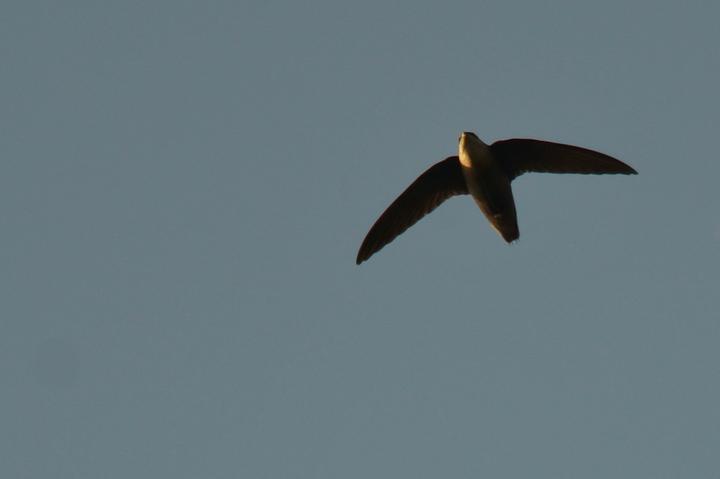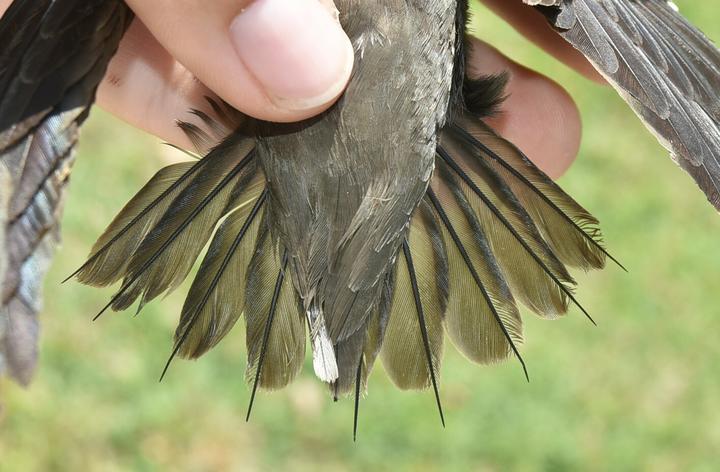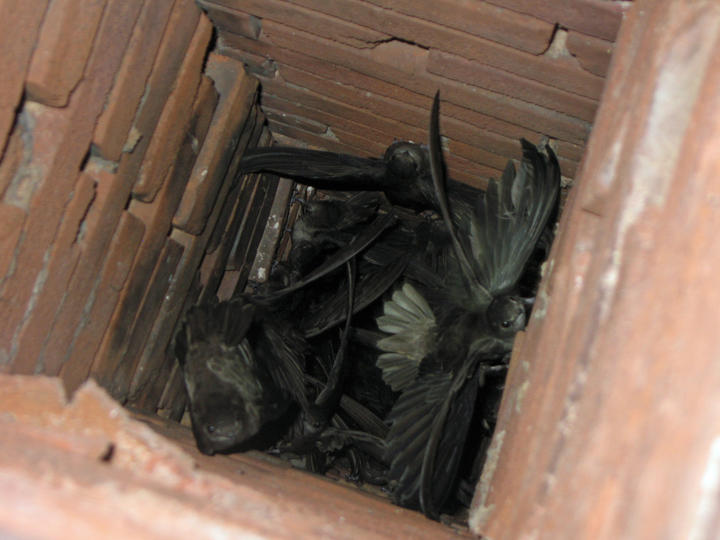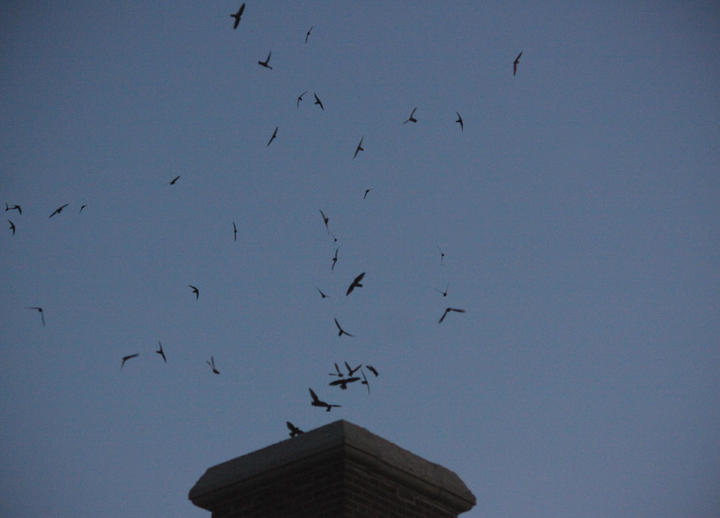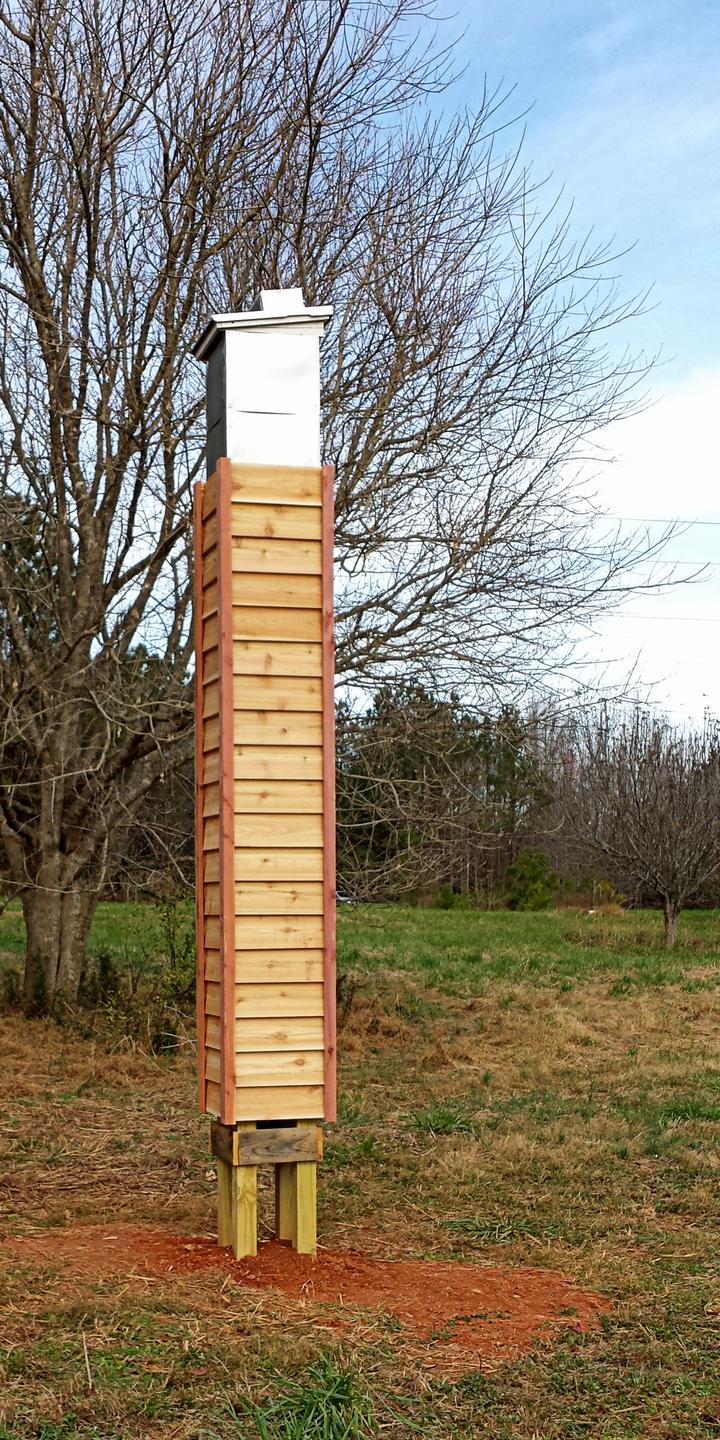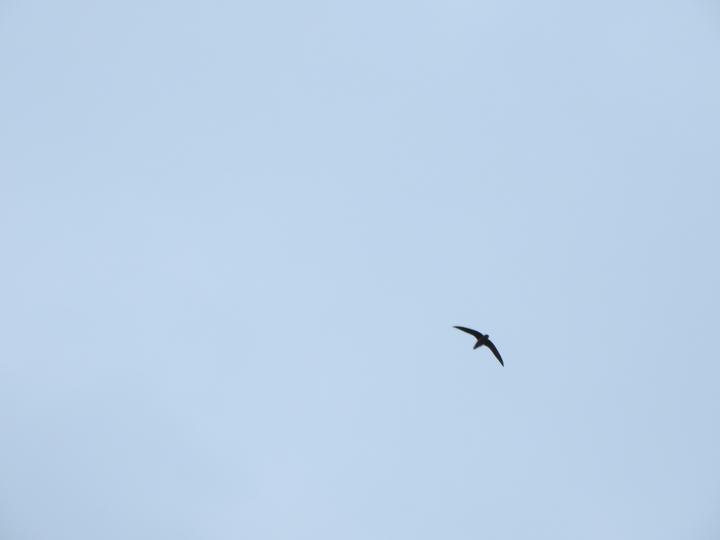More names for this bird
The Dakota and Anishinaabe were among the earliest people to name Minnesota’s plants and animals, as well as to understand them in relation to Minnesota’s climate and seasons. Those original names are still in use, and several are included on the Season Watch website. However, complete translations were not available.
Latin (or scientific name): Chaetura pelagica
The scientific community has a convention of assigning agreed-upon Latin names to every kind of organism. Using scientific names helps people communicate confidently about the same organism and organize lifeforms based on how closely related they are.
Page contents
About the chimney swift
Chimney swifts at communal roost
August 21, 2016, Dane County, Wisconsin
Video by Ryan Treves (https://macaulaylibrary.org/asset/33109761)
About the chimney swift
- "Spiny-tailed wanderer" is the meaning of this bird's Latin name (Chaetura pelagica). Tiny spines on the tips of its tail feathers support the chimney swift as it clings to vertical surfaces (e.g., building walls or chimney interiors).
- The moniker "wanderer" is apt because it flies long distances between North and South America.
- This small bird flies all day long, eating insects on the wing, and is rarely seen perched. (In fact, it cannot perch the way most birds do, on horizontal supports such as branches or wires.)
- Fun fact: Recognize this bird by its chittering sounds and its shape, which birders describe as a "flying cigar".
- Chimney swifts migrate. Expand the "Migration animation" section below to learn more.
Migration animation
Migration animation
Click the full-frame icon (lower right corner of video) to play at full size.
More about eBird's abundance animations
eBird data from 2006-2020. Estimated for 2020. Fink, D., T. Auer, A. Johnston, M. Strimas-Mackey, O. Robinson, S. Ligocki, W. Hochachka, L. Jaromczyk, C. Wood, I. Davies, M. Iliff, L. Seitz. 2021. eBird Status and Trends, Data Version: 2020; Released: 2021. Cornell Lab of Ornithology, Ithaca, New York. https://doi.org/10.2173/ebirdst.2020
Visual guide to phenology
Watch for changes in chimney swifts' presence (or absence), abundance, and behaviors at different times of year. Also, pay attention to when young-of-year appear and develop.
Note to observers
This page explains general clues to watch and listen for when observing chimney swift phenology. However, this page does not explain how to identify this bird or collect data in a standardized way.
- For help with identification, see The Cornell Lab's All About Birds.
- For guidance on collecting data, see Nature’s Notebook.
Audio resources
June 14, 2020, Hennepin County, Minnesota
Recording by Michael Hurben (https://xeno-canto.org/568395) CC BY-NC-SA 4.0
Recording by edmundsjames (https://freesound.org/s/241374/) CC0
More resources
